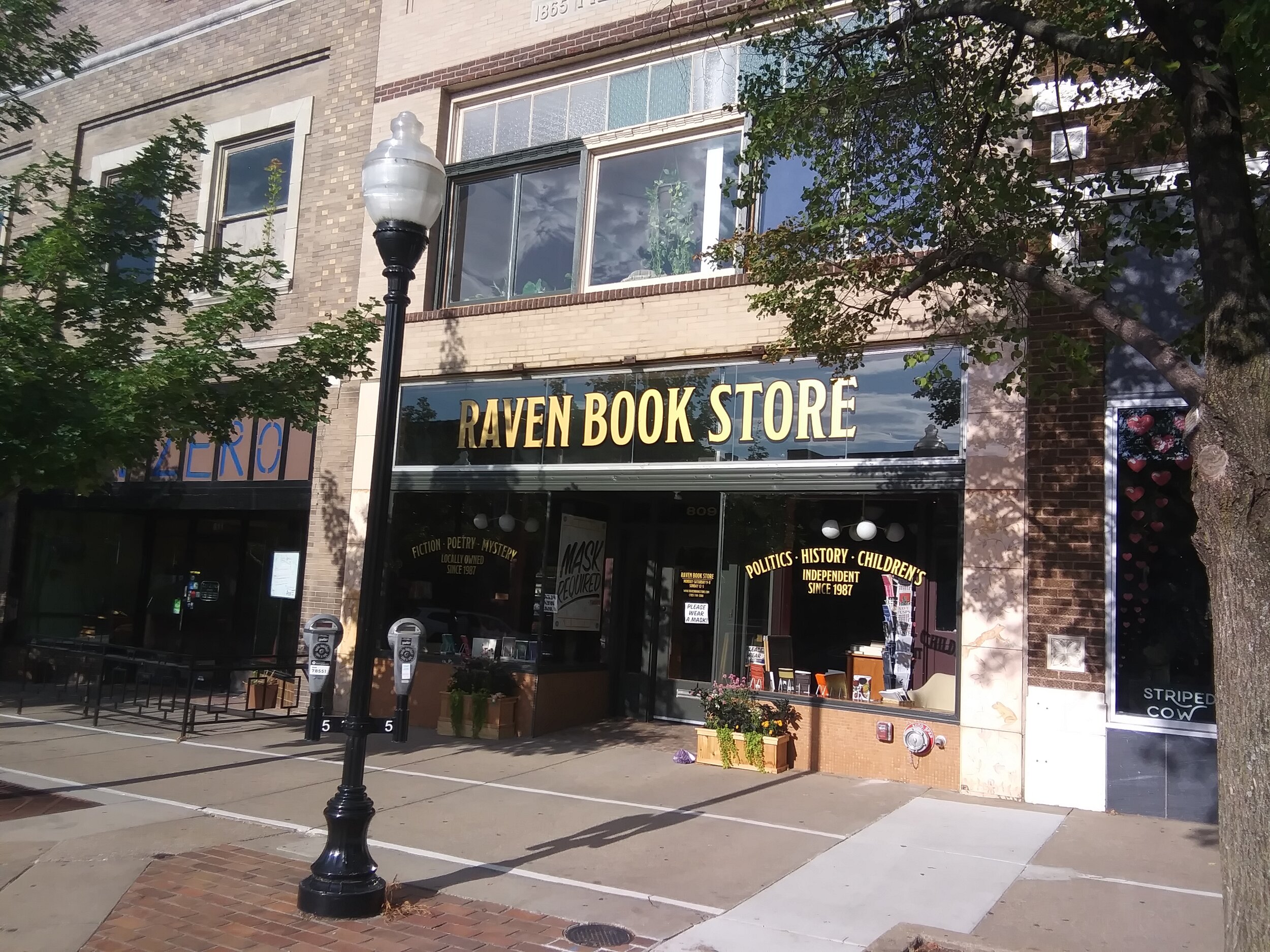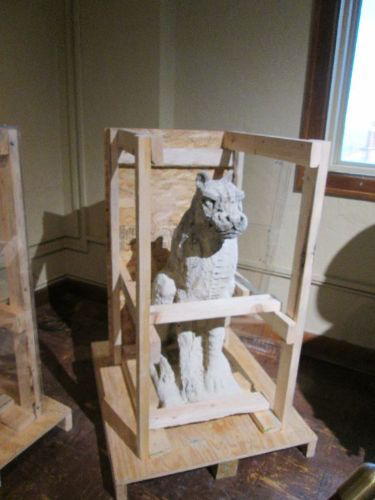The Raven Book Store, 809 Massachusetts Street
/It would be hard to imagine two businesses more different than an ax-throwing entertainment venue and a bookstore. But the transition from one to the other—through a crucible of fire—has brought new life to the Newmark Building at 809 Massachusetts Street.
Built in 1865, the building reopened recently as the new location for longtime Lawrence bookseller The Raven. The previous tenant of 809 Massachusetts was Blade & Timber, an ax-throwing attraction that was forced to close in October 2018 after an electrical fire broke out in the building. While the fire caused extensive damage, according to a report in the Lawrence Journal-World, Dalton Paley of Paley Properties & Investments, the building’s owner, was committed to ensuring that the structure maintained its historic character.
Aftermath of the fire that gutted the building in 2018. (Photo by Mike Myers, Hernly Associates)
“I’ve been fixing up historic buildings since I started working with my dad, and he did it before me,” Paley said. “Every building we own right now is on the historic registry. This type of rehabilitation project preserves the character of downtown, and to me, downtown Lawrence is the heart of our city.”
Much of the front of the building was boarded up afer the fire. (Photo by Mike Myers, Hernly Associates)
Working with Hernly Associates Inc., Paley Properties & Investments was able to restore the limestone façade on the back of the building, including two original windows; maintain most of the original wood floors on both the first and second floors of the building; and reinstall the first floor’s original tin ceilings. Paley also rehabilitated the Massachusetts Street storefront, restoring the transom above the front doors to let more light into the space. In addition to space for the relocated Raven Book Store on the first floor, the build now has two new one-bedroom apartments upstairs.
“We were really excited to honor both the history of The Raven and the history of this space,” said Danny Caine, owner of The Raven. “The whole concept is to merge a traditional historic storefront bookstore with a bold and exciting kids section in the back.”
The back door of the newly refinished second floor. (Photo by Mike Myers, Hernly Associates)
“Much of the end product is thanks to Danny’s vision,” Paley said. “We like to take on projects with a specific tenant in mind, and The Raven was a perfect match, combining our interest in preservation with a lot of smart thinking about what will attract retail shoppers to Lawrence.”









































